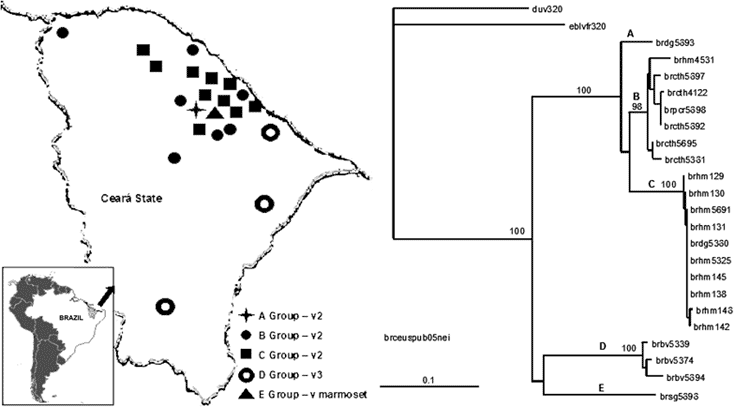Volume 12, Number 12—December 2006
Dispatch
Rabies Virus Maintained by Dogs in Humans and Terrestrial Wildlife, Ceará State, Brazil
Figure 1

Figure 1. Rabies virus isolates by geographic localization and neighbor-joining tree showing a comparison of the groups formed by Ceará State, Brazil, samples isolated from 1997 to 2003. Bootstrap values of >50% obtained from 100 resamplings of the data using distance matrix methods are shown in the nods.
Page created: October 04, 2011
Page updated: October 04, 2011
Page reviewed: October 04, 2011
The conclusions, findings, and opinions expressed by authors contributing to this journal do not necessarily reflect the official position of the U.S. Department of Health and Human Services, the Public Health Service, the Centers for Disease Control and Prevention, or the authors' affiliated institutions. Use of trade names is for identification only and does not imply endorsement by any of the groups named above.